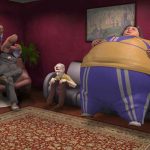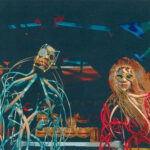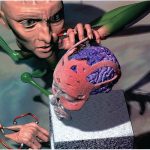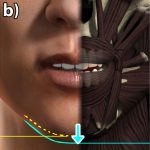Christopher (Chris) Landreth
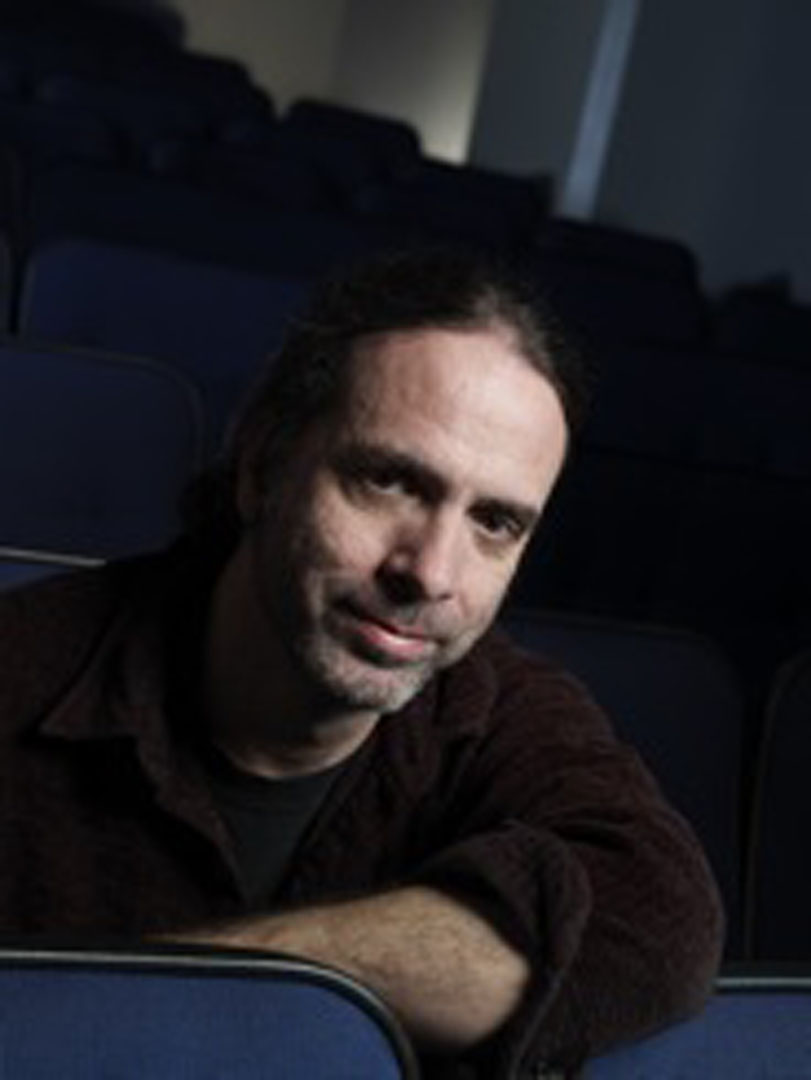
Most Recent Affiliation(s):
- The National Film Board of Canada (NFB)
Other / Past Affiliation(s):
- Alias | Wavefront
- JALI Research
- University of Toronto
Website:
Bio:
When Chris was a young boy, his was given a battery of psychological tests to determine what he might be when he grew up. One confusing outcome of this was that Chris was found to have “Mixed Brain Dominance”. When Chris later discovered computers, he found that while he used a tablet with his left hand, he used a mouse with his right. This mixed-up brain behaviour has since become a staple of Chris’s career path. For example, Chris flexed his left brain to receive an MS degree in Theoretical and Applied Mechanics from the University of Illinois, in 1986. After this, he helped develop a fluid measurement technique called Particle Image Velocimetry, which has since become a fundamental way of measuring fluid flow.
But soon enough, Chris’s right brain asserted itself. He discovered computer animation when he met Prof. Donna Cox at the National Center for Supercomputing Applications (NCSA). Chris then created his first short film, The Listener (1991), which won him notoriety on MTV’s “Liquid Television” that year. Chris decided then that animation was the best way to entertain both sides of his brain equally.
In 1994, Chris joined Alias Inc. (now Autodesk Inc.), as an in-house artist, where he defined, tested and abused animation software as it was being developed. Chris’s work was a driving force in developing Maya 1.0, in 1998. Maya is the most widely used animation software in the world, resulting in an Academy Award in 2003. During this period Chris directed the end in 1995, and Bingo in 1998. the end was nominated for an Academy Award for Best Animated Short Film, in 1996. Bingo earned a Canadian Genie Award in 1999, and was ranked 37th in the “100 Most Influential Moments in CG History” by CG World Magazine in 2003.
In 2004 Chris released Ryan, with the National Film Board of Canada, Copperheart Entertainment and Seneca College in Toronto. Ryan quickly became one of the most celebrated animated short films of all time. It pioneered a style Chris calls “Psychorealism”, using surreal CG imagery to show the psychology of its characters. Ryan received the 2005 Academy Award for Best Animated Short Film, and over 60 other awards, including prizes at the Cannes Film Festival and Grand Prize at the 2004 Ottawa International Animation Festival. In 2009, Chris released The Spine, again with the NFB, Copperheart and Seneca College. This film was nominated for a Canadian Genie award in 2010, and was one of “Canada’s Top Ten Films” of the Toronto International Film Festival Group, in 2009.
Chris’s latest film is Subconscious Password, a psychological exploration of how we remember the names of old friends. Subconscious Password premiered at the Annecy International Animation Festival, where it was awarded the Festival’s grand prize, the Annecy Crystal, for Best Short Film. Chris continues to be obsessed both with new techniques in CG, and new ways in telling stories with these techniques—as both hemispheres of his brain continue trying to outdo one another. He is an expert in Facial Animation and has developed a course called “Making Faces”, which he has taught at Dreamworks Animation, Seneca College, the University of Toronto and the Ecole George Melies in Paris.
Experience Category: Jury Member:
Award(s):
Artwork(s):
Animation/Video(s):

Ryan
Director(s): [Landreth]
Studio(s): [The National Film Board of Canada (NFB)]
[SIGGRAPH 2004]
[SVR Issue #147, Track #16]

Bingo
Director(s): [Landreth]
Studio(s): [Alias | Wavefront]
[SIGGRAPH 1998]
[SVR Issue #125, Track #29]
Learning Category: Presentation(s):
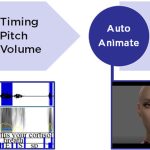
Type: [Talks (Sketches)]
JALI-Driven Expressive Facial Animation and Multilingual Speech in Cyberpunk 2077 Presenter(s): [Edwards] [Landreth] [Popławski] [Malinowski] [Watling] [Fiume] [Singh]
Entry No.: [60]
[SIGGRAPH 2020]
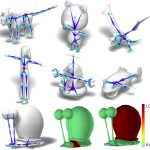
Type: [Technical Papers]
RigNet: Neural Rigging for Articulated Characters Presenter(s): [Xu] [Zhou] [Kalogerakis] [Landreth] [Singh]
[SIGGRAPH 2020]

Type: [Technical Papers]
Visemenet: audio-driven animator-centric speech animation Presenter(s): [Zhou] [Xu] [Landreth] [Kalogerakis] [Maji] [Singh]
Entry No.: [161]
[SIGGRAPH 2018]
Role(s):
- Animation Director
- Art Show Artist
- Awardee
- Computer Animation Jury Member
- Keynote Speaker
- Talk (Sketch) Presenter
- Technical Paper Presenter



